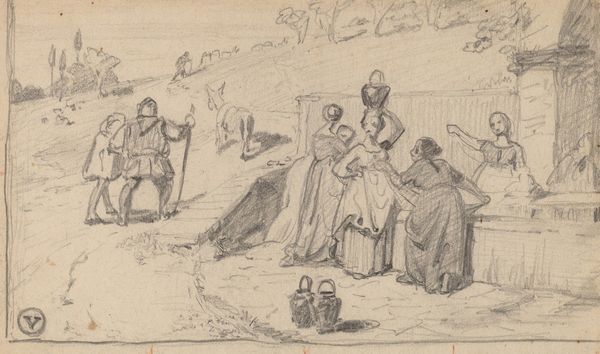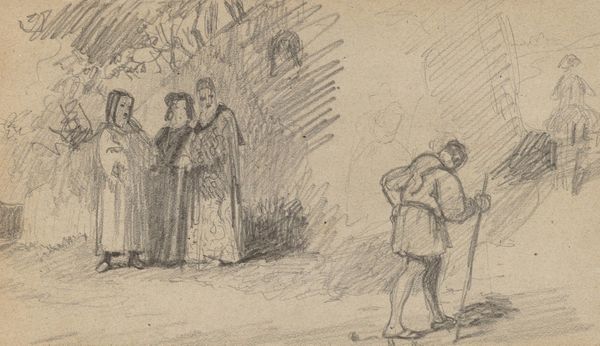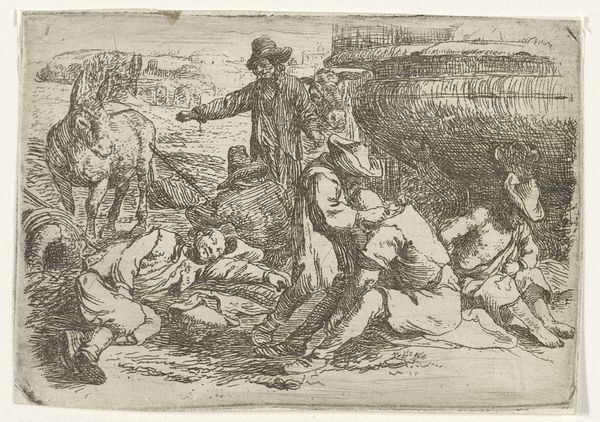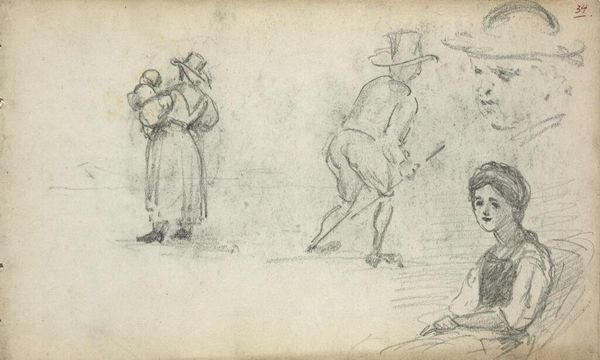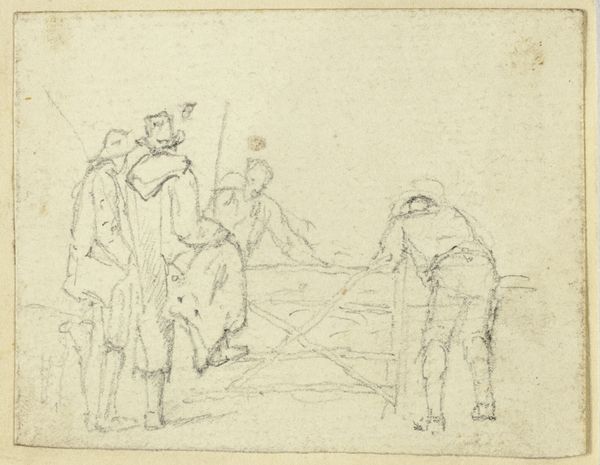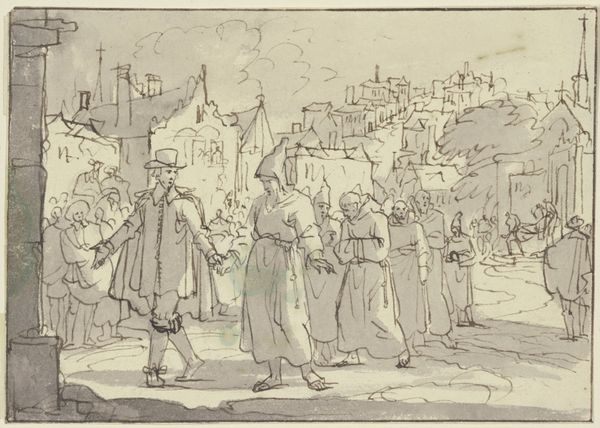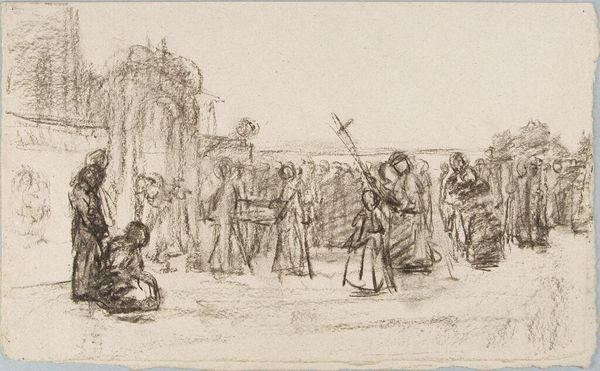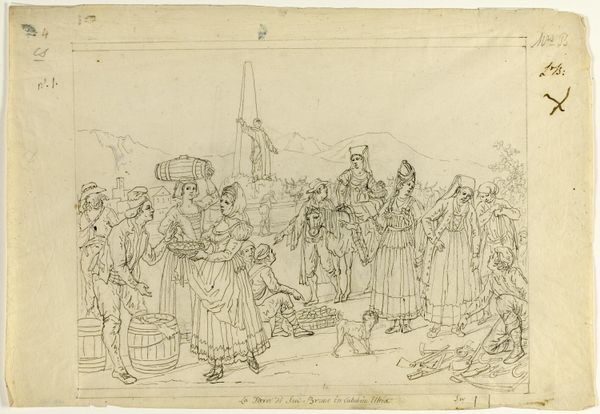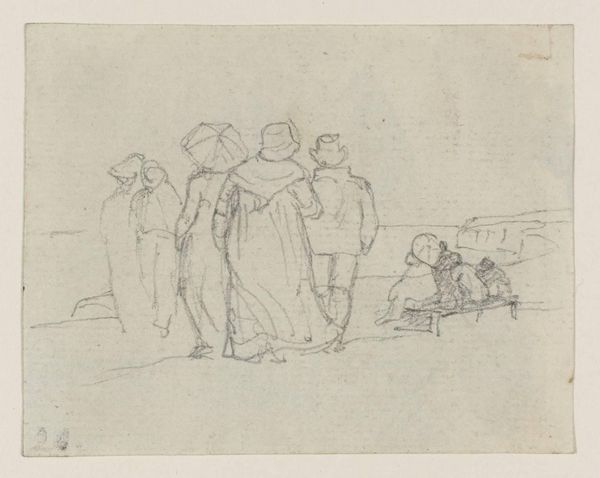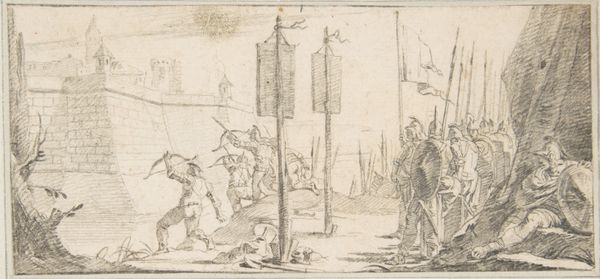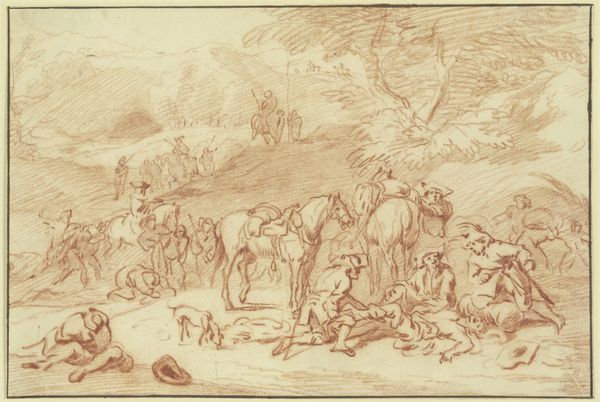
Copyright: Public Domain: Artvee
Curator: This sketch, “Father and Son,” was rendered around 1859 by Elihu Vedder using pencil. It exudes a certain…melancholy, doesn't it? The muted tones only enhance the sense of weariness. Editor: It does. And yet, despite that overall somber mood, I see glimmers of resilience and, dare I say, affection? The placement of the father's hand on the child, those gazes… I suspect the women at the fountain provide some measure of welcome. It all lends to a powerful tension. Curator: The imagery resonates deeply. Note how Vedder employs the donkey, an ancient symbol of burden and patience. We’re visually reminded of a larger narrative: familial continuity amidst potential displacement, but within reach of water, the font of life, literally and figuratively. Editor: Absolutely. The social and historical contexts further illuminate the picture’s complexity. Imagine, in 1859, on the cusp of a world of national anxieties with social mores. Vedder gives us a scene with an unmistakable genre theme that highlights both fragility and resolve against looming darkness. Was it commissioned or from Vedder's own accord? Curator: I don't believe this was a commission but most likely a study, given the artist’s known preoccupation with family and history as thematic, interwoven motifs, or possibly social issues regarding poverty in Europe during the Romanticist time period. I want to reiterate the father’s stance, for example, conveys dignity, not defeat. Editor: I concur. He stands erect, with that cane, despite circumstances that hint at transience. This resonates profoundly with the role art can play in both recording and contesting societal norms. Vedder perhaps wanted to portray the emotional truths of social struggles and endurance through art. Curator: The cyclical symbolism in the artwork really gets me. Vedder suggests the eternal nature of the human journey by subtly introducing cyclical forms, contrasting hope with existential quandaries. It truly asks where this child goes and how this story of these human figures in history ultimately progresses. Editor: As Vedder subtly blends social commentary and romantic sensibilities, we are confronted with universal themes that speak to all ages. In museums and galleries, such pieces serve as powerful reminders of our shared human experience. It fosters dialog that extends beyond Vedder's time to speak on modern problems as well. Curator: It definitely stays with you, I am certain it resonates, especially given the piece’s ability to distill cultural continuity in such understated, beautiful art!
Comments
No comments
Be the first to comment and join the conversation on the ultimate creative platform.
